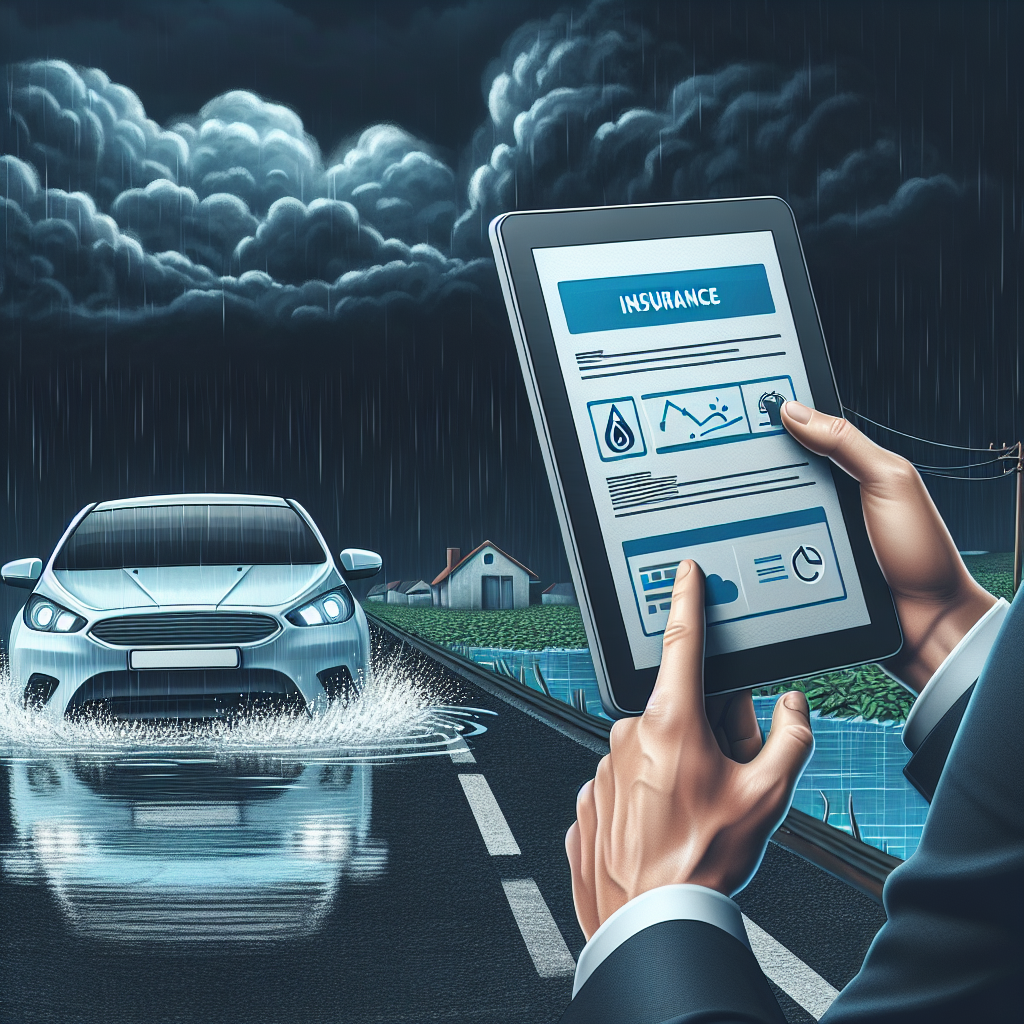When Floods Hit: Is Your Car Insurance Ready?
We’ve all seen the wild weather patterns lately. One minute, it’s sunny; the next, heavy rains flood your street, and your car might be left stranded in a watery mess. Imagine stepping outside to check on your ride, only to find it bobbing in murky water. That’s when the panic sets in. You might think, ‘Wait, will my insurance save me?’ Spoiler: It depends—on your coverage, to be exact.
I remember the summer of ‘21, when a freak storm turned my normally quiet neighborhood into a river. Cars were inundated, and some folks weren’t covered. It’s a wake-up call: Don’t wait until disaster strikes to figure out your insurance!
If your policy only has basic liability coverage, even Hurricane Bob won’t help you. This type of insurance is all about protecting YOU from damages caused to others—not about fixing damage done to your own vehicle in a flood. So, if you want to be covered for flood damage, you gotta go comprehensive.
The Nitty-Gritty of Comprehensive Coverage
So what exactly is included in comprehensive coverage? This isn’t just some fluffy term; it’s your safety net when natural disasters strike. Think hurricanes, wildfires, and yeah—floods. It’s an optional coverage that’s often rolled into full-coverage plans. If you’re in a flood-prone area, this is a no-brainer.
With comprehensive coverage, you might be looking at protection from water damage to your car’s engine and electronics, ruined interiors, and mold that loves to sneak in after floods. I learned the hard way that mold is a long-term issue; when you think you’ve dried the car out, you might still have microscopic spores lurking around. The last thing you want is a new car and a mold problem!
But here’s what falls through the cracks: Your personal belongings inside the car won’t be covered under comprehensive. So, if your laptop or designer handbag didn’t swim well, you’re out of luck. That falls under renters’ or homeowners’ insurance instead. If you’ve got anything valuable in your car, ensure you’ve got some coverage sorted there too.
What to Do When Disaster Strikes
So there you are, watching your car slowly sink into the depths. What’s the game plan? First things first: don’t even think about starting that engine. Turning it on could lead to catastrophic damage. Trust me on that!
Next up, you’ll want to snap pics. Not just a couple, either—document all the angles. Your insurance company is gonna want proof, and trust me, blurry photos won’t cut it. If you’ve never been in this situation, you might think it’s overkill, but this evidence can be worth gold in the claims process.
After you’ve got your photos, don’t waste time—call your insurance company ASAP. The sooner you file a claim, the quicker an adjuster can come out and assess the damage. In my case, a friendly claims rep helped me navigate through the chaos. They’re not all bad, though I had my fair share of frustrating hold music!
Is Comprehensive Coverage Worth It?
Now, onto the million-dollar question: is it really worth adding flood coverage? If you’re in an area that’s hit by storms frequently, the answer is a resounding YES. For an extra couple of hundred bucks a year, you could save yourself thousands down the line.
But here’s the kicker: Don’t think you can just wait until you see storm clouds to add this kind of coverage. Most insurance companies hit “pause” on new policies or changes when the weather looks dicey. Meaning, you gotta be proactive—get that coverage sorted before the rain starts.
I learned this too late during that storm I mentioned earlier. Since I didn’t have comprehensive at the time, I ended up paying a chunk of change out of pocket. Lesson learned, people—don’t let a tiny detail derail your financial stability.
Mid-Article FAQ
What does comprehensive coverage actually protect against?
In simple terms, it covers you against disasters like floods, theft, vandalism, and even falling objects. It won’t just save your car from water but can give you peace of mind for various events.
Can I add comprehensive coverage anytime?
Sadly, no. Most insurers freeze additions or changes to policies when severe weather is imminent. It’s always best to secure your coverage before an event is on the radar.
Will my insurance cover my stuff inside the car?
Not unless you have renters or homeowners insurance. Your belongings left inside won’t get any love from your car insurance policy.
Should I file a claim if the damage is minor?
This is tricky. Minor damage might make you hesitate, but remember, every company is different. Sometimes filing a claim for small damages can still be worth it, especially if you have comprehensive coverage.
How much does comprehensive coverage cost?
Typically, it’ll add about $100 to $300 to your annual premium, depending on where you live and your vehicle type. Think of it as a small price for peace of mind in stormy weather.
Final Thoughts: Don’t Wait for the Flood to React!
Flooding isn’t just a coastal issue; it can happen anywhere. If you live in a place where storms can rage, the last thing you want is to be scrambling for protection when floodwaters are rising. Now’s the time to dig into your insurance and make those adjustments before it’s too late.
Check what you have, chat with your insurance broker, and consider that extra coverage. It might feel like yet another thing on your to-do list, but believe me, you’ll thank yourself later—especially if a David vs. Goliath storm comes to town.
Your car’s a big investment, and safeguarding it is definitely worth it. Get informed, get covered, and kick those worries to the curb! Let’s hope we don’t have to deal with floods anytime soon, but if we do, let’s be ready!



